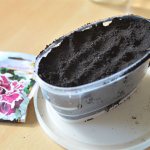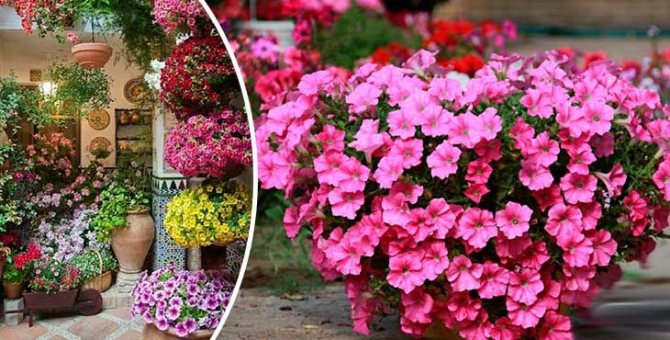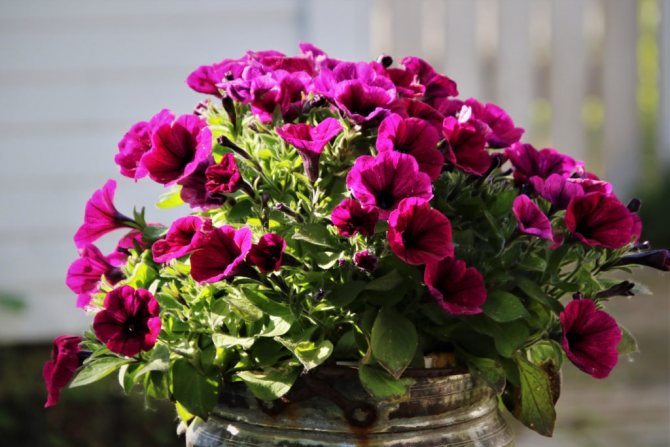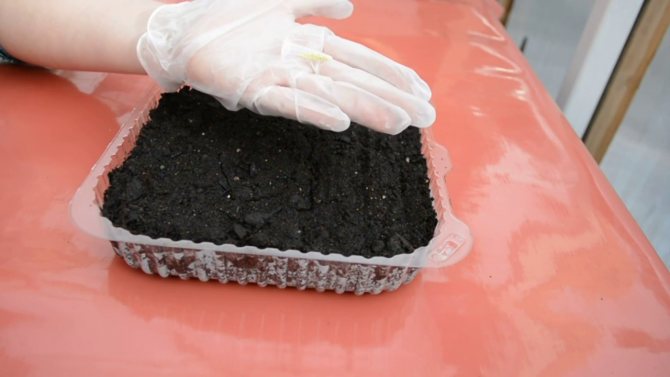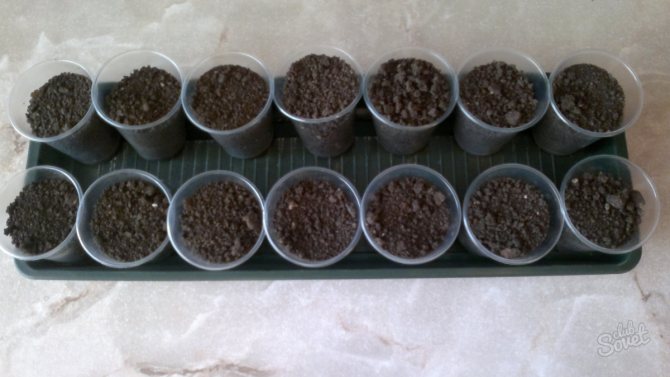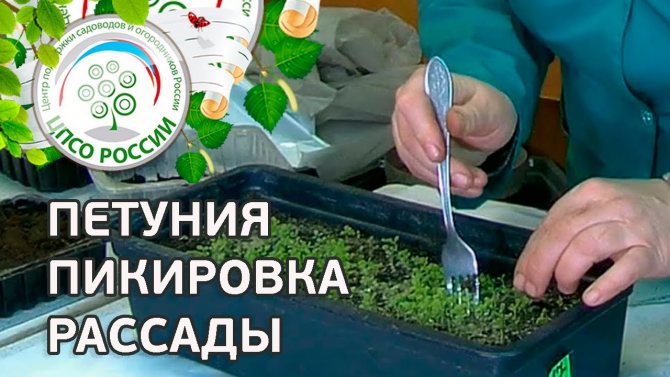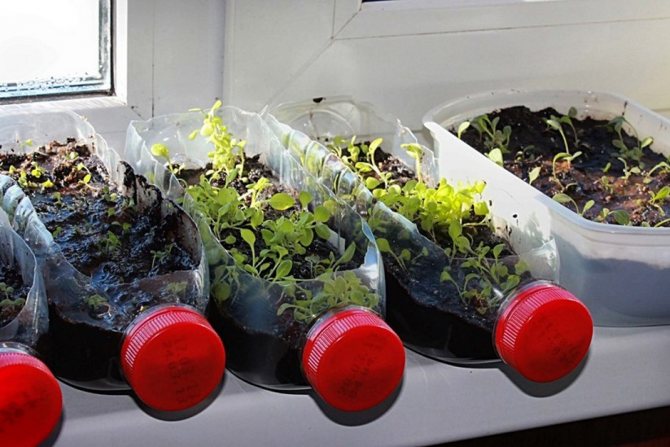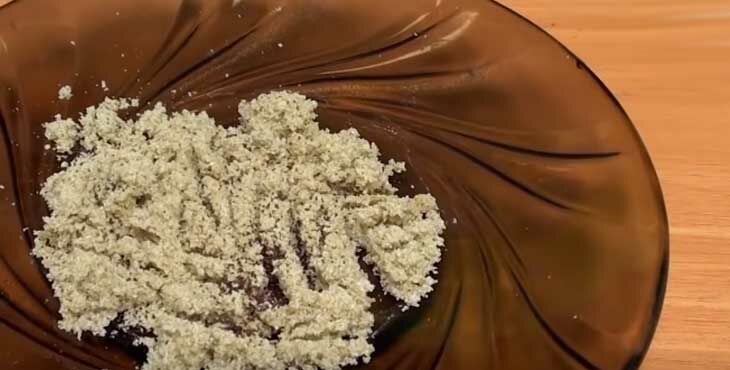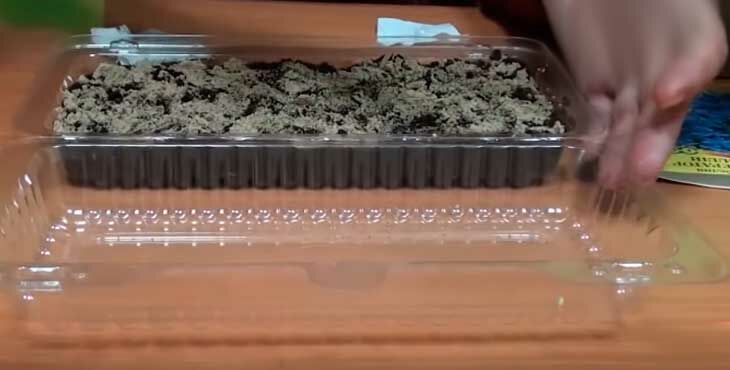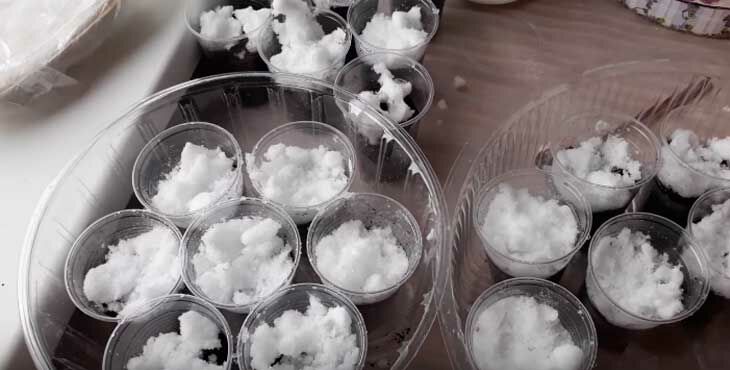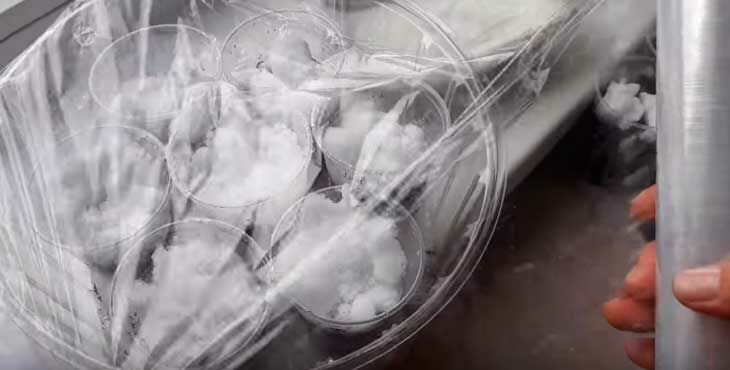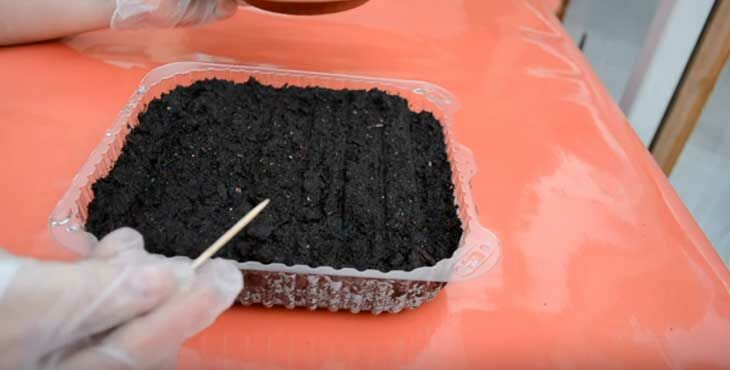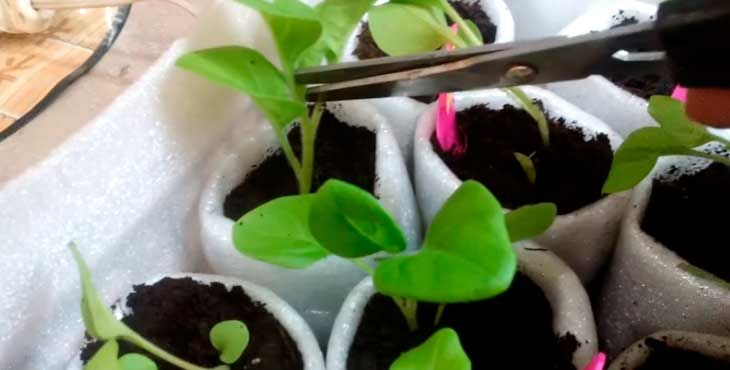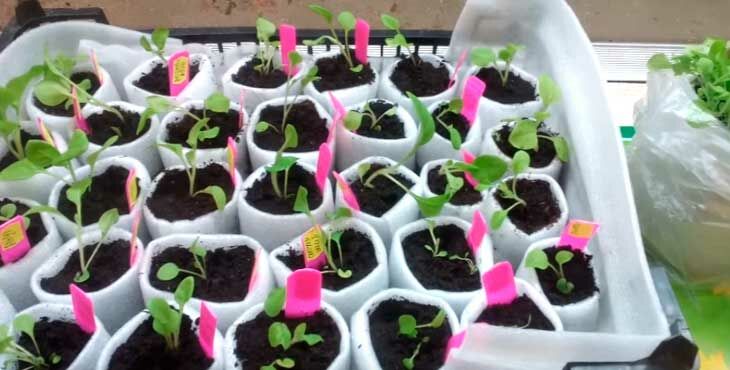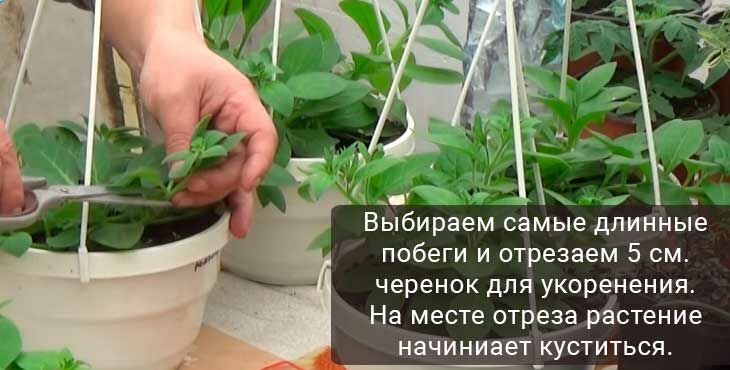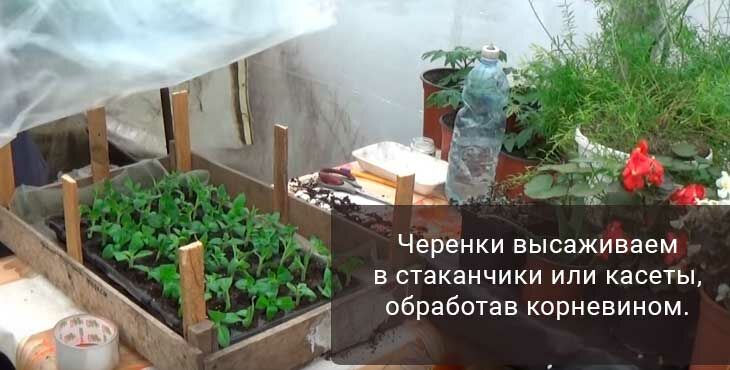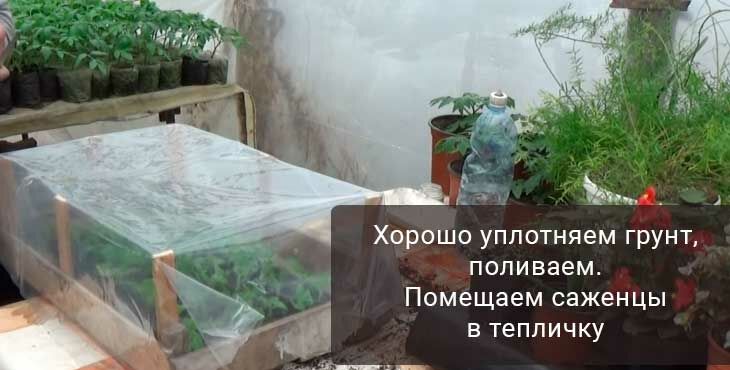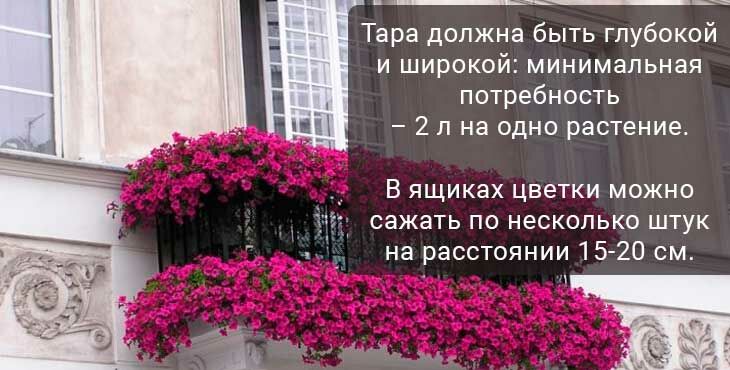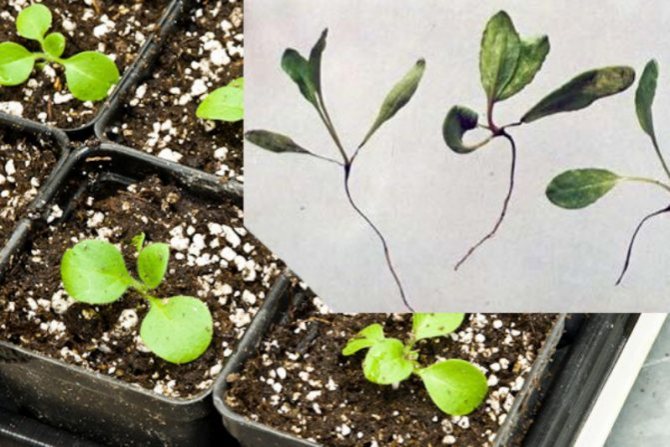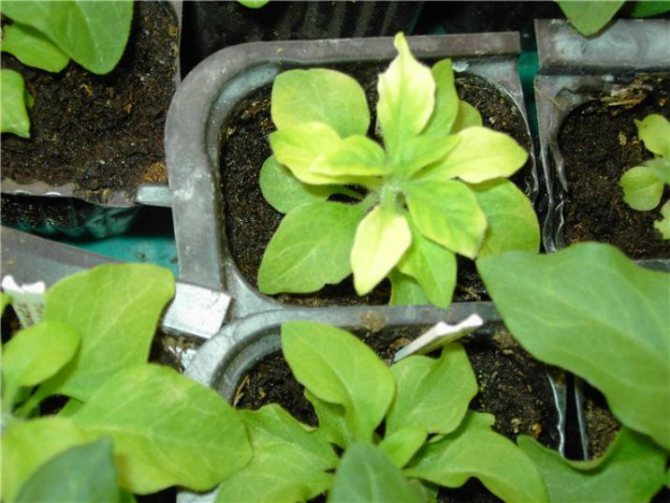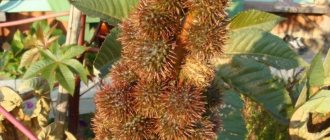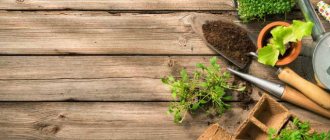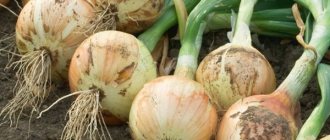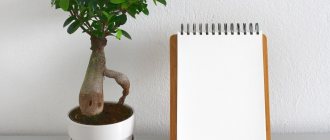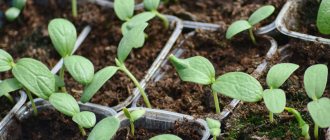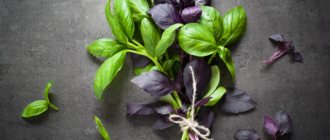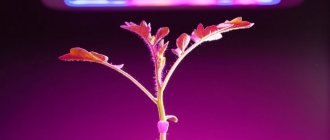01/11/2019 Growing petunia from seeds is quite difficult: therefore, many people prefer to buy seedlings and not bother with sowing, picking and replanting. But I think that buying ready-made seedlings is unsportsmanlike (especially if you have a specialized diploma). In addition, you may simply not find the seedlings of the desired varieties, and this is a shame. In general, growing petunia seedlings at home is correct and interesting. It remains to figure out how to do this.
I must say that this is not easy. If even a novice gardener can cope with growing tomato seedlings, then you will have to tinker with petunia. Therefore, carefully study this material and the materials on the links - they provide comprehensive recommendations.
- Landing dates
- Control sowing
- Sowing in ordinary soil
- Sowing on coconut substrate
- Sowing in peat tablets
- Leaving before picking
- Disease protection
- Transfer and picking
- Pinching growth points
- Transshipment
When to plant?
Some sites write that it is necessary to plant petunias for seedlings in January. This is very, very bad advice.
In open ground, seedlings of petunias are usually planted at the age of 70 to 80 days, and in pots, pots and boxes at the age of 80 to 90 days. The age of plants is counted from the emergence of seedlings, and seedlings appear approximately 10 days after sowing. At the same time, it is transferred to a permanent place, usually at the end of May, or even in June, already blooming. If we take June 1 as the mark, then the seedlings should appear no earlier than March 1. It follows that the optimal timing of sowing petunias for seedlings:
- tall large-flowered varieties - in early February;
- ampel varieties - from mid to late February;
- common varieties - the second decade of March.
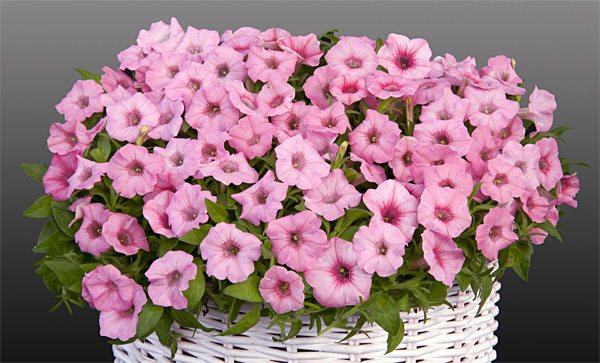
There are some varieties whose seeds are planted earlier and later. If you bought seeds from a very reputable supplier (I do not know such among Russian companies), it is better to adhere to the recommendations on the package.
Two words about lunar landing
Utter nonsense.
Why is early sowing bad?
When growing seedlings at home, you probably cannot provide petunias with the right combination of temperature and light. In January and February, the batteries in apartments are usually hot, and the air temperature in the room (especially near the windowsill on which the boxes are placed) is high. At the same time, daylight hours are very short and the light intensity is low. In such conditions, the seedlings are strongly stretched and subsequently develop poorly.
Providing additional lighting and temperature control to the petunias will not stretch out, but will outgrow. Overgrown seedlings take root less well in a permanent place and give fewer flowers.
Plant feeding
After frost, on the 20th of May, leave a part and plant later. Sometimes it snows at the end of May.
Petunia will bloom anywhere, but for a long and abundant bloom, it is best to choose a sunny location. The site is cleared of weeds, the soil is dug, not forgetting about drainage and sufficient looseness. Young seedlings of petunias are very responsive to organic fertilizers.Therefore, when digging up the soil, gardeners always apply the necessary organic fertilizers.
Sowing substrate
There are three options available:
- loose soil with neutral acidity (if suitable for tomato, then you can plant petunia seeds too);
- coconut peat (of course, it is not peat at all);
- peat tablets.
Sowing in the ground
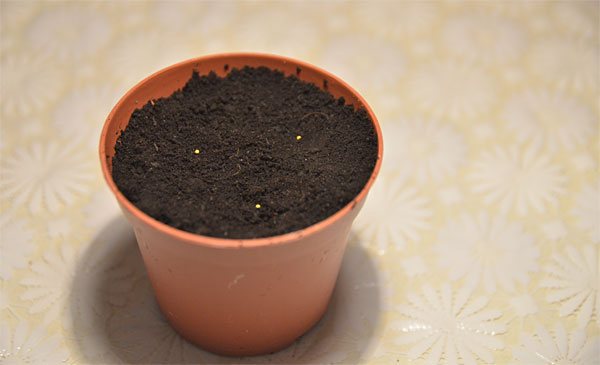

For sowing seeds, containers with a depth of 5 ... 6 cm are used. Soil is poured into them so that about 1 cm remains to the edge, and then tamped. Then, on top of the poured and tamped layer, a layer of soil sifted through sieves about 0.5 cm thick is poured. This gives an even "bed" for the seeds. Then the seeds are laid out in a square-nested way according to the scheme 1x1 cm by the piece. If they are in granules, this is not difficult to do. Uncoated seeds can be mixed with fine sand and scattered in paths using a regular teaspoon.
After sowing, the soil surface is sprayed abundantly with a spray bottle, using a very fine spray - almost "fog". The water should be warm. Some gardeners do not use pure water, but a solution of the drug "Epin". Controversial decision: I cannot understand why a stress adaptogen is needed for seeds that are in close to ideal conditions.
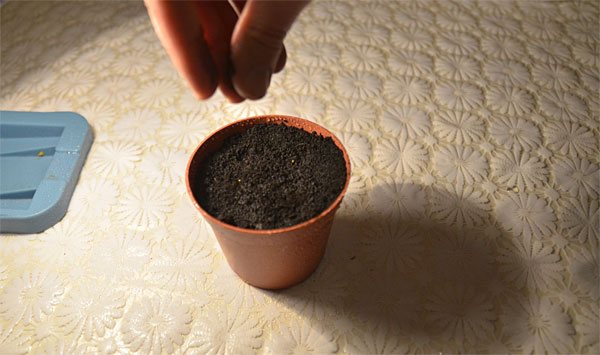

After watering, the containers are covered with foil and placed in a warm place. Condensation constantly forms on the surface of the film. This is not good: you need to either wash it periodically, or just tilt the container so that large drops slide sideways.
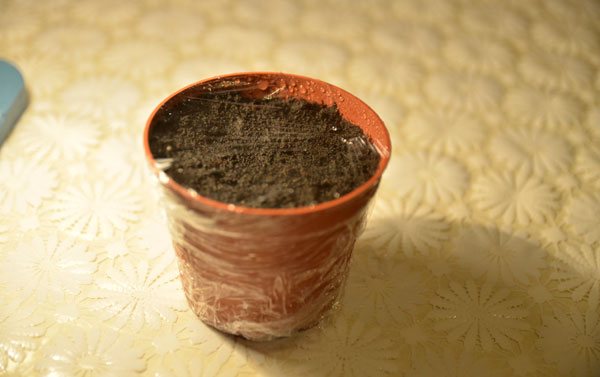

The film should be removed after the seedlings have unfolded the cotyledonous leaves. It should be removed gradually, opening the container by about a third every day. After three days, the film can be removed completely.
Usually, seedlings appear on the third day after sowing, but sometimes the seeds do not germinate for 7 ... 8 days. Granular seeds may not show signs of life even longer (up to two weeks), because the dense granule does not allow moisture to pass to the seed itself.
Video about sowing petunias in semi-industrial machstabs:
Sowing on coconut substrate
The method was suggested by user Elenka02 from Forumhouse. Sowing requires a special coconut substrate.
Benefits of coconut briquettes:
- sterility;
- a large volume of pores filled with air - the roots of seedlings cannot be "filled";
- low density - if necessary, you can easily transplant a single seedling into a new dish
Coconut briquettes do not contain nutrients - therefore they need to be "delivered" from the outside. The author processes the granules with seeds with the growth stimulator "Energen", and the substrate itself - with the fertilizer "Krepysh" from.
Of course, "Krepysh" is not required - any NPK-complex dissolved in water will do. The convenience of "Krepysh" is only in the fact that it is at the very least balanced, and its composition (according to the manufacturer) includes macro- and microelements. Of course, you have to pay for this pleasure, and pay a lot in terms of a ton, but you are not planning to plant a million units of petunia seedlings?
For sowing, special plastic containers are used.
Sowing on peat tablets
For planting petunia seeds, tablets with a diameter of three cm or more are suitable. The use of tablets simplifies the work and reduces the risk of developing fungal diseases of very young seedlings. If you grow seedlings of expensive varieties and hybrids of petunias, buying tablets is quite advisable.
How to sow correctly:
- Soak peat tablets until they swell;
- Drain excess water from the pallet;
- With a match we make a depression in the center of each tablet;
- Carefully transfer one seed to each tablet;
- If the seeds are pelleted, soak their shell. To do this, you just need to drop water from a pipette;
- Cover the seeds a little with peat and cover the tray with glass or foil.
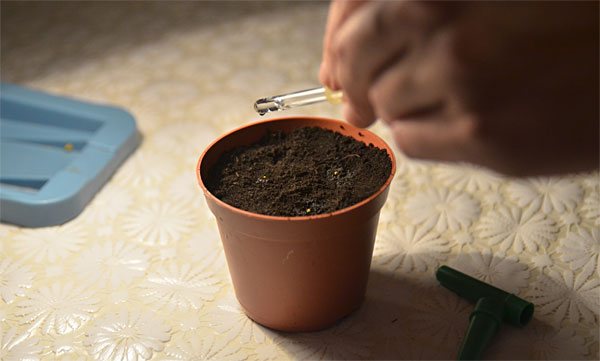

Seeds
It is also important to ensure the correct selection of seeds.Excellent seedlings will be obtained only if quality planting material is selected.
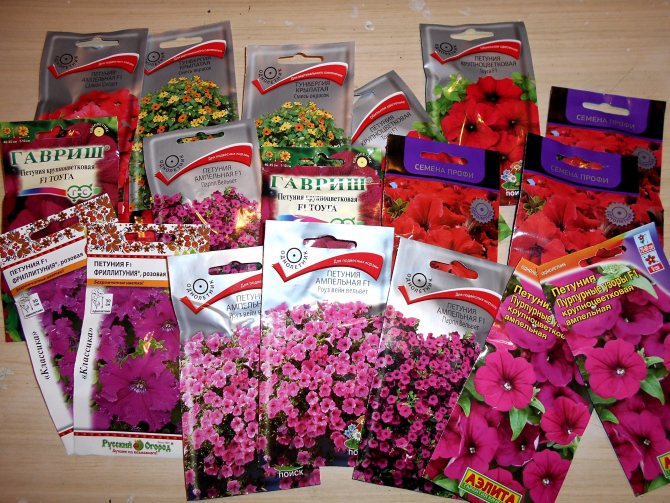

Better to avoid buying seeds from random vendors in the marketplace, and to buy seeds from stores that are not trusted by consumers.
Experienced growers prefer to collect seeds on their own or purchase them in specialized stores. Only here you can buy quality seeds that will be properly packed:
- in sachets;
- flask;
- into granules.
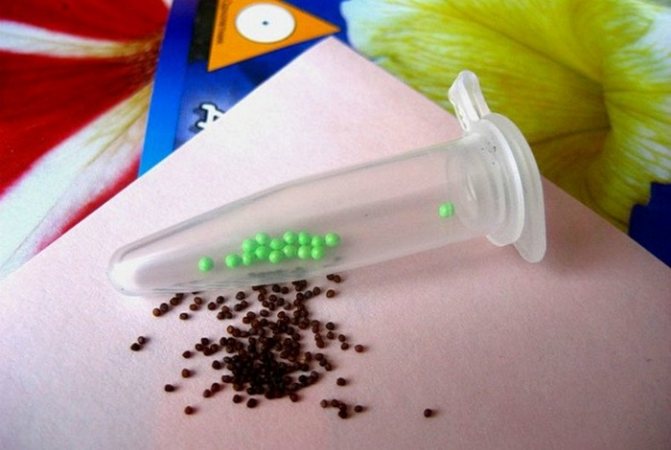

In such packages, one hundred percent seed germination is ensured.
Petunia seedling care
Backlight
Petunia shoots must be additionally illuminated: in the first 7 days - at least 16 hours, at the age of a week to a month - 14 hours, at the age of over a month - 12 hours. If you do not use the backlight, the seedlings will stretch out and, even if they do not die, will grow very weak.
Watering
Watering petunia seedlings should be very careful, with a teaspoon or through a strainer. Watering is moderate, the water should be warm. Young seedlings are very vulnerable, so try not to overflow them.
Top dressing
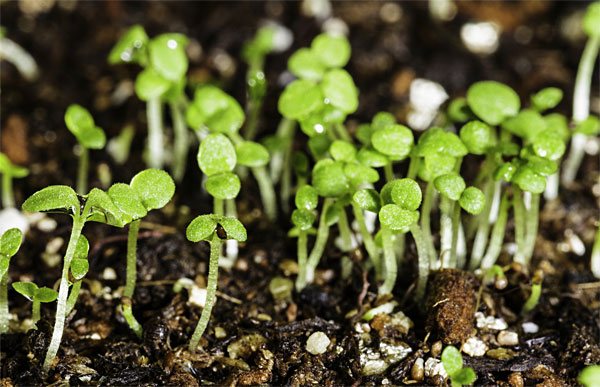

Some authors recommend doing the first foliar feeding one week after germination, but I don't. In my opinion, such small seedlings cannot be deficient in nutrients in fresh soil. However, for unambiguous conclusions it is necessary to set the experiment with control.
For feeding, you can use either a prepared solution of mineral fertilizers (concentration not higher than 0.5%), or ready-made complexes based on humates or chelates. Since their manufacturers do not always adhere to the recipe, it is better to dilute in accordance with the instructions and even half.
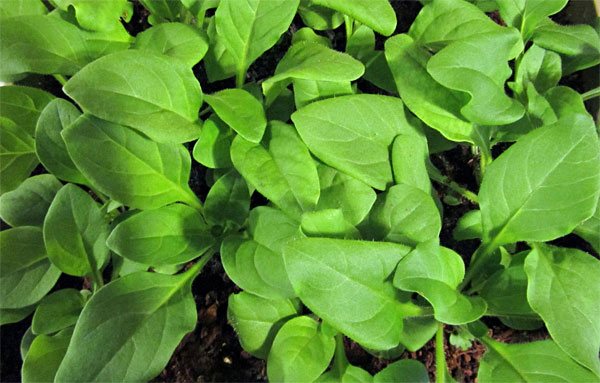

Treatment with growth stimulants
If the seedlings grow poorly, they can be treated with plant growth stimulants based on brassinosteroids (Epin, etc.). As for the drug "Zircon" and its varieties, I can not say anything.
Disease protection
Root rot and other fungal diseases are a major problem when growing petunias from seeds. Weak seedlings are easily attacked by fungi, which under normal conditions behave like saprotrophs. The lesion is facilitated by high soil and air humidity, lack of light, low temperature and excess nitrogen.
If the seedlings have characteristic signs of fungal diseases (wilting, blackening of the base of the stem, etc., mushroom bloom, etc.), the amount of watering should be reduced and watered so that water does not get on the plants. In addition, it is highly desirable to treat the seedlings with a fungicide solution. The following drugs are allowed in Russia:
- "Alirin B" tablets (biological product, safe) - 1 tablet per 2 liters of water. Use for watering the soil;
- "Maxim Dachnik" (based on fluodixonil) - 1 ml per 1 liter of water. Use for watering the soil and spraying plants;
- "Healthy Earth" (carboxin + thiram) - 2 ml per 1 liter of water. Watering the soil.
Everything else is not permitted by the Registry (more precisely, not registered), however, there are recommendations for the use of the drugs Fitosporin M, Baktofit (these are bacterial drugs, used in the same way as Alirin) Ridomil Gold (2 ml per liter, watering and spraying), "Maxim plus", "Previkur Energy" (01.5 ml per liter, watering the soil at the root). The last three are chemicals that are not entirely safe: they should be used with the usual precautions.
After watering the soil with a solution of fungicides, its surface can be sprinkled with fine dry sand or ash. This will reduce the humidity in the air and create some kind of barrier for pathogenic fungi.
Transfer and picking
A pick is a pinching of the tip of the main root. The root is pinched so that the plant forms a large mass of lateral roots in the upper soil horizon, where most of the nutrients necessary for plants are located.Since the tip of the main root inevitably breaks off when transplanting seedlings, over time, picking began to be called the transfer of seedlings of vegetable and flower crops into separate containers.
A pick of petunia seedlings is carried out after the appearance of two true leaves. It is possible earlier, after the appearance of cotyledonous leaves, but in a very young plant it is easy to damage.
How to transplant and dive petunia seedlings
- Prepare in advance a container in which the seedling will grow;
- We press through the recess for the senz in the ground;
- For transfer, it is better to use a sharpened stick or pencil. Gently pry it with a lump of earth, holding it by the edge of the leaf. It is the leaf - even if you cut it off, the plant will survive. If you break the stalk or cut off the growth point - that's it;
- Gently lower the petunia into the prepared recess and press the soil against the stem. If the seedling is stretched out due to lack of light, we deepen it up to the cotyledon leaves, otherwise we deepen it as it was buried before transplanting.
Immediately after transplanting, it is better to cover the plants with a non-woven material for 1 ... 2 days.
Priming
For the successful growth of seedlings, it is important not only to purchase high-quality seeds, it is also necessary to prepare a suitable container and soil.
The soil must be necessarily loose, absorbing moisture well. Experienced flower growers recommend using a soil that includes:
- sand;
- garden soil;
- peat;
- humus.
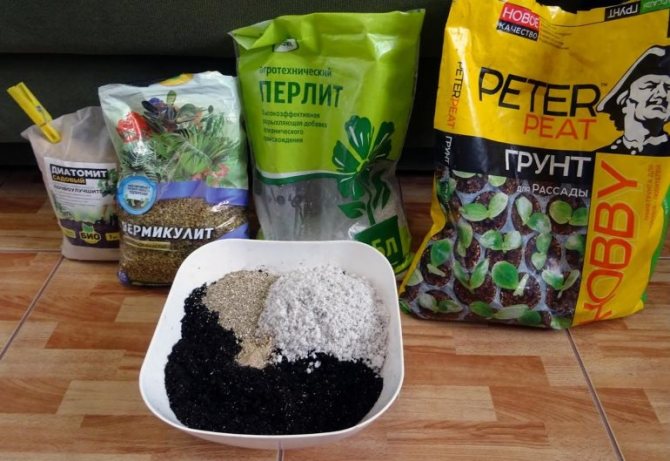

All of these components are taken in equal proportions. After that, the composition is treated with a solution of potassium permanganate.
Drainage is laid out at the bottom of the prepared container, and the prepared composition is poured on top.
Pinching the growth point
Plants with a removed apical bud branch better and turn out to be more spreading: therefore, it is better to pinch bush petunias above the fourth or fifth internode. With an earlier pinching, the plants will lag behind in growth, with a later one, they will grow unevenly.
In ampelous petunia seedlings, you can pinch the growth points of the lateral stems. In this case, a large number of lateral shoots of the following order are formed on them.
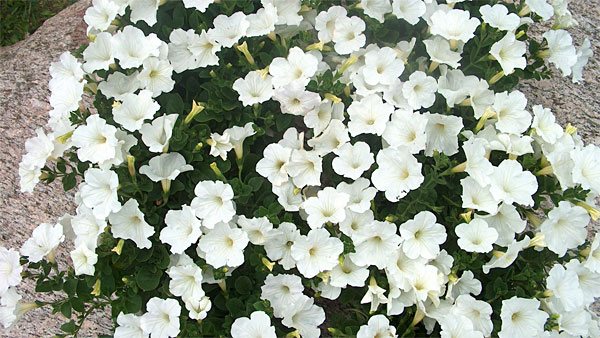

Transplanting grown petunia seedlings into separate containers
Usually, after picking, the plants are transplanted 3 more times - in a container with a volume of 0.1 -> 0.2 -> 0.5 liters, and when growing ampelous petunias, even 4 (the last pot has a volume of about 1 liter). It is quite time consuming; in addition, seedlings of petunias develop better if you immediately transfer large pots of it. Since I am not engaged in growing a large number of seedlings, it is not difficult for me to immediately transfer the plants to containers with a volume of 0.5 ... 0.75 liters, in which they grow until they are planted in a permanent place.
Petunia seedlings should not be transplanted, but transshipped with a lump of earth. Transfer is carried out when the root system completely "assimilates" the space of the pot.
Possible growing problems
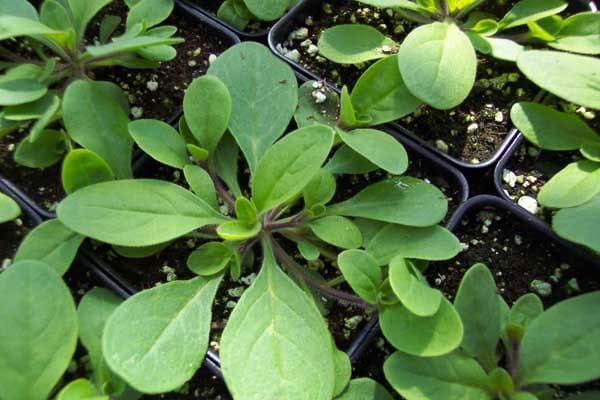

If the seeds are sown too deep, then the seedlings can not wait. Fragile seedlings will die with constant temperature fluctuations and a lack of light. The plant runs the risk of contracting fungal diseases, in particular, black leg, if the room is cool plus very high humidity. Infected petunias are not treated, they are removed, and the soil is watered with 40% formalin solution or Maxim. After that, the earth should dry completely to its full depth. From a lack of iron, the plant suffers from chlorosis. Seedlings should not be watered too abundantly, otherwise nutrition will be disturbed. The plant can be saved by feeding it with Ferovit. It is not uncommon for petunia to suffer from spider mites that do well in dry environments. To get rid of it, seedlings are treated with Aktellik, Fitoverm and other biological products.

